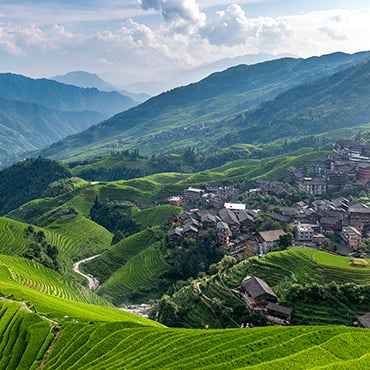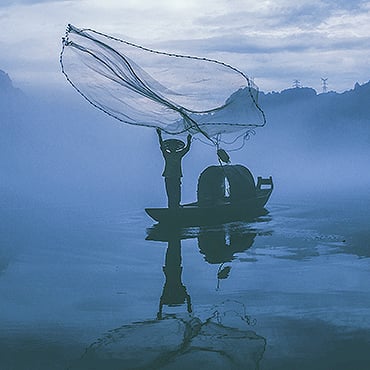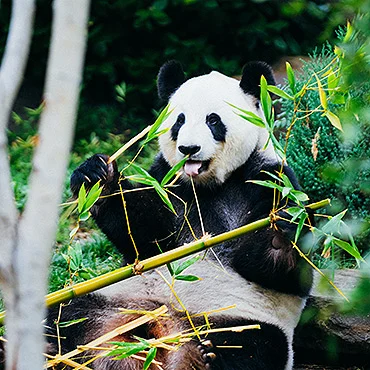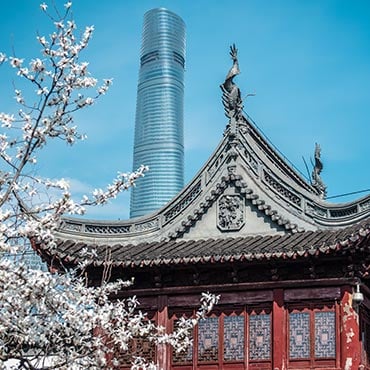Longji Rice Terraces – or Longsheng Rice Terraces as they are also known – are located in Longsheng. A relatively small town by China’s standards, with a population of just under 190,000 people, Longsheng is located about 80 kilometers or two hours drive from Guilin.
A visit to the Longji Rice Terraces is to take a step back in time, and on arrival, you’ll quickly discover why. The local minority Zhuang and Yao people have diligently tended the terraced rice paddy fields for hundreds of years, despite the fact there was no flat ground to work with originally.
Every terrace has been cut by hand without any sophisticated agricultural machinery. Methods used historically continue to be used today. This is extraordinary given the terraced fields are scattered between 300 and 1100 meters above sea level and cover an area of 66 square kilometers.
Whether you’re standing close up or viewing from a distance, the mountain ridges covered in these remarkable rice fields resemble the scales of a dragon’s back. And it is this analogy which inspired the name ‘long ji’, which translates as ‘dragon’s back’.
The remarkable visual appeal of the rice terraces was brought to international attention after discovery by photographers in the 1990’s, who were keen to share the uniqueness of the local people and the land they’ve cultivated since the Yuan dynasty about 650 years ago.
Finding your way around the Longji Rice Terraces
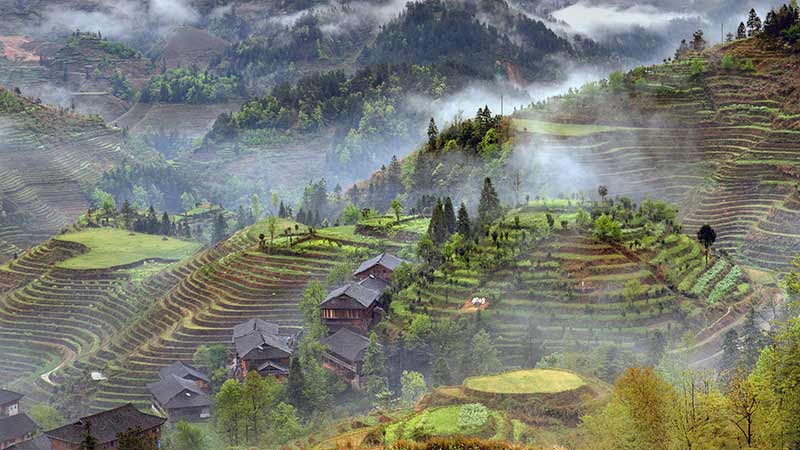
Longji Terraces are divided into two main sections: Ping’an Rice Terraces and Jinkeng Rice Terraces, both of which are home to the local minorities who live in the nearby villages. So while the rice terraces themselves are arguably the main attraction, there are other things that are just as fascinating.
For a start, walk or hike up the mountain and your efforts will be richly rewarded with stunning panoramic views, not only of the terraced fields, but beyond the mountains as well. Depending on the time of year you visit, expect to see the landscape transformed because every season brings with it a palette of different hues.
As you’d expect, rice is the main crop here, although chili pepper, corn, passionfruit, monk fruit, sweet potatoes and tea are grown here too. Production starts in June and by October, rice is ready for harvest. If you can time your visit to coincide with the end of September and beginning of October, you’ll discover an impressive view of golden fields stretching out over the hills.
The people of Longji: Providing a view back in time
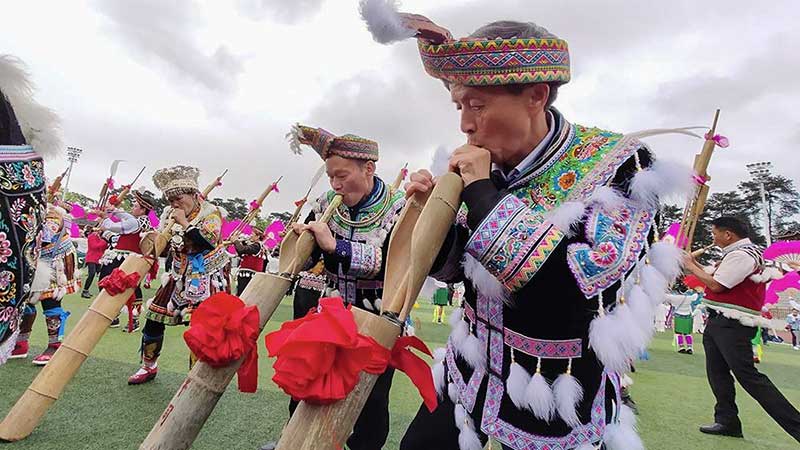
Apart from the exceptional views, the Longji Terraces offer a special glimpse into the rural life and unique culture of the local minority people.
Ping’an, with a population of just 1,000, is home to the Zhuang people, while the Yao people live in Jinkeng. Both minorities still maintain a simple, traditional life, effectively working as peasants. A typical day will find them at work by sunrise and resting at sunset.
Each of the two ethnic groups has its own customs and cultures, and if you can time your visit accordingly, expect an up-close experience that can’t be matched in many places around the world.
The Zhuang people celebrate a folk song festival on the third day of the third lunar month when they dress in traditional costume and congregate to sing, with men and women separated for the festivities.
In song, the young women ask the young men highly pertinent questions related to their daily lives.
The young man will need to have an answer for pressing questions like ‘which bird likes to swim together?’ and ‘which plant looks like an umbrella growing in the water?’ – And that is how love matches are made here.
If the would-be suitor’s answers satisfied the girl, he will be gifted the ‘love ball’ – an embroidery ball made by the young woman.
Hongyao hair is special: Here’s why
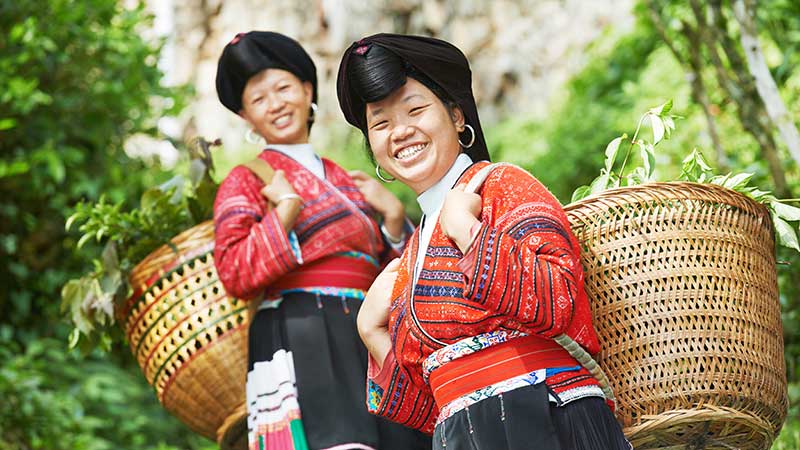
An equally quirky tradition maintained by the Red Yao people of Longshen is the Rapunzel-like length of their hair, which can grow to around 1.6 meters. In the interest of practicality, hair folded like a turban on top of the head.
Whether it’s the rice they grow and eat, or the fact they’ve never used commercial shampoo, it seems the hair of the Red Yao women is imbued with special power. When a Hongyao girl reaches 17, she usually has her hair cut to ear length according to the local coming of age tradition. Incredibly, this is the only time Hongyao women are allowed to cut their hair. The hair is kept and added to her hair coil later, together with the collected hair that falls out.
A young Hongyao woman wears headscarf before marriage because only the bridegroom can see her hair. After getting married and having children, she will use the kept hair to make the different coiled hairstyles without wearing a headscarf. Different hairstyles indicate the marital status of the woman, with a hat-like wrap around style showing a woman is married. They usually place a wooden or silver comb on the top of their hair, so hair can be combed whenever they feel the need.
Hair is soaked and washed in a secret hair cleanser mixed with orange peels, dregs of tea seed oil, and some medicinal herbs, all of which is added to rice water, when it is boiled and then fermented. It is then rinsed in spring water.
When and how to enjoy the best of the Longji Terraces
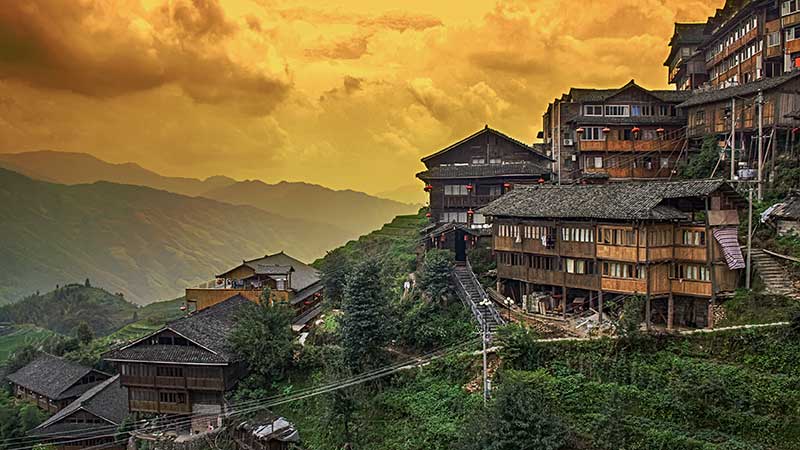
Every season is a postcard at the Longji Rice Terraces, so time your visit to coincide with panoramic perfection. The good news is, you can pretty much guarantee that any time you make the trek to Longji, you won’t be disappointed.
| April to late June | Seedlings transplanted in the flooded paddy fields. Expect to see Longji sparkle. |
| July to early September | Terraces covered in a rich green hue as rice grows in the paddy fields. |
| Late September to November | As harvest season kicks in, the ridged terraces of Longji are transformed to a gorgeous golden hue. |
| December to early February | With winter underway, the rice fields turn silvery white, marking the end of the annual cycle. |
In terms of seeing the rice terraces up close, hiking is by far the best way to explore the area. Hike to the top in three to four hours, or enjoy a 50 minute walk to a panoramic view of the terraces.
And while you can cover considerable territory in a day, an overnight stay at one of the many guesthouses provides the opportunity for a richer experience. Enjoy time with the locals, savor delicious local food, like bamboo shoots, organic eggplants, seasoned beef, and rice wine.
The local specialty, bamboo rice, comes highly recommended. Requiring a special method of cooking over a fire, the dish’s ingredients, including corn, sweet potato, taro root, water, are ‘infused’ such that the resulting sticky rice is bamboo-flavored.
Getting to the Longji Terraces
Buses from Guilin are available for travel to the Longji Terraces, however expect to more than double your travel time if you decide on this option.
A better choice if your travel time is precious (and let’s face it, whose travel time isn’t?), is to take a guided tour with a local who knows the area and is well acquainted with the very best on offer here.
Travel can be arranged from Yangshuo too, however keep in mind that the distance between destinations is considerably more – around 65 kilometers – so weigh up your options about the best point of departure.
The Longji Terraces are a magical experience; certainly one that will be appreciated on site and long after your adventure here is over.
| Entry Prices | |
| Adults | ¥100* |
| Children (under 18 years old and above 120cm) | ¥60 |
| Children (under 120cm) | free |
| Food | Yes | |
| Transport | Yes | Transport by car or bus |
| Tours | Yes | |
| Family friendly | Yes | |
| Close to city | Yes | 145 kilometers or 1.5 hours drive by car from Yangshuo |
| Opening hours | 24/7 |
* Purchase your ticket at the entrance to the Longji Terraces, then travel on the local shuttle bus to either Ping’an (25-30 minutes) or Jinkeng (45-50 minutes). In addition to the shuttle bus ticket, visitors must also pay for the other optional activities available including the cable car at Jinkeng, Huangluo Redyao village, and the performance of folk song and dance.
A visit to the Longji Rice Terraces is one that captivates the imagination of travelers to China. It has all the hallmarks of a quintessentially authentic Chinese experience – magnificent scenery, traditional culture, the opportunity to connect with locals, a chance to enjoy regional food. If you’re planning travel to Guilin or Yangshuo, why not consider extending your time in the area by taking a trip to Longsheng? You can do that with ease through ChinaTours.com. Make the most of every minute of your vacation and enjoy a fully guided experience, allowing you to relax and learn all there is to know about this incredible corner of China. Reach out to our travel team with your questions. We are here to help.

